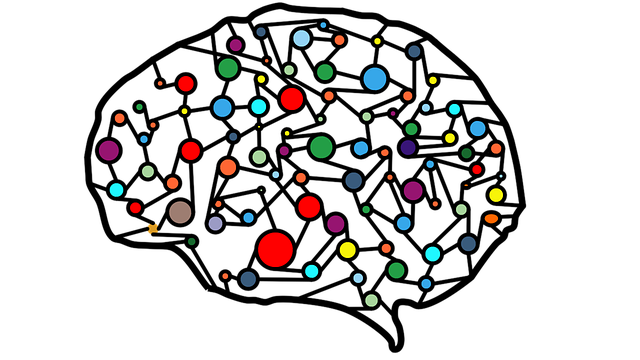Through the aptly termed “essential visual pathway,” our eyes and minds collaborate to make sense of our broad environment. Through a sophisticated multi-leveled architecture of neurons & nerve connections, the mind organizes and categorizes what the eyes see, allowing us to see, recall, and make decisions most predictably. But at that point, one could wonder how convolutional neural networks could have detected this.
Human minds are constantly scanning their environment. We constantly form expectations about what we perceive, consciously or unconsciously, and then react accordingly. We are capable of marking any object we come across. Record it in the deep recesses of your memory so you can retrieve it later. How can we accomplish that? How would we interpret the situation and react appropriately?
What Is A Convolutional Neural Network?
Convolution neural networks, usually called ConvNet or CNN, are a family of feed-forward neural networks utilized for complicated picture classification issues, image analysis, and natural language processing.
It is exceptional as it can recognize patterns in both text and pictures and decipher them. Later in the essay, we shall go further into this. However, let’s take a step back and comprehend the history of the Convolutional Neural Network before delving further into this subject (CNN).
How Does It Work?
CNN attempts these elements everywhere and in every conceivable place since it is uncertain where they will match in a new picture.
Convolutional neural networks identify picture properties that enable object classification by using a number of filters. In the CNN system, several kernels are responsible for extracting these properties. CNN employs edge kernels to identify large variations in pixel values. If the adjacent pixel has a comparable intensity, it’ll be dark after the transition.
It will become white when they diverge significantly. A blur kernel minimizes the amount of noise in the picture by filtering out differences between neighboring pixels. CNN employs the bottom Linear regression kernel to identify edges in a particular direction and to highlight differences between neighboring pixels. The Sobel filter and the emboss kernel filter accentuate pixel differences in a certain direction.
Pooling: To deliver the highest total value, the Pooling Layer subsamples the output picture of the Convolutional Layer. Additionally, they conduct the minimum and average functions as well as switch to a different function.
In this instance, the Pooling Layer employs a special aggregation function that only gathers data. Its task is to cut the matrix’s height and breadth in half while maintaining the depth (channels). By identifying the most salient characteristics of the Pooling Layer, this technique helps us reduce the likelihood of overfitting. Quicker model training is possible with this approach.
Fully-Connected Layer:
A completely linked layer receives its input from the output of the last pooling layer. To create a straightforward neural network on top of a convolutional neural network, the fully connected layer must flatten the value in the vector. This layer joins forces with other fully connected layers to do this. Determining the likelihood of belonging to a certain class falls within the purview of the last layer. A softmax activation function is used where there are several classifications. We’ll utilize the sigmoid function to classify objects into binary categories.
What Distinguishes CNN From Neural Networks?
A neural network is a collection of algorithms that simulates the workings of the human brain. It attempts to identify underlying links in a piece of data by simulating the communication between biological neurons. In this context, neural networks are systems of neurons that might be synthetic or natural in origin. Neural networks can adapt to changing the input to get the best possible result without changing the output criteria. Interested in pursuing certified neural network training? We’ve compiled a list of top-notch options to help you excel.”
The broad name for a link that resembles the brain is neural networks.
Convolutional Neural Networks are networked with specialized architectures for reading image pixels from images and learning from them.
What Are The Advantages Of A CNN?
Due to their great accuracy, CNNs are the most used method for picture classification and identification. The CNN employs a hierarchical architecture that creates a network in the form of a funnel, produces a fully-connected layer in which all neurons are coupled, and processes the output. You can learn from Great Learning’s Free Machine Learning Course and understand the mechanism of the algorithm.
Why CNN Instead of a Neural Network?
CNN’s primary benefit over its forerunners is that it automatically separates the crucial aspects without human assistance. For instance, when several images of dogs and cats are shown, it learns the specific characteristics of each class.
Rows of data items hosted by neurons that are part of the same neural network make up an artificial neural network’s “layers.” After each loop through the neuron, ANN utilizes modified learning weights. It returns and modifies the weights based on the accuracy determined by a “cost function.” Furthermore, unlike a convolutional neural network, a CNN does not employ neurons or weights; rather, it casts many layers on pictures and uses filtering to assess the inputs from the images. These layers are arithmetic, the corrected linear unit, and the complete connectivity. These layers’ objectives are to analyze data output, comprehend patterns the network can detect, and produce an n-dimensional vector.
Conclusion:
The convolutional neural network is a typical artificial neural network used in image processing issues.
A fully connected neural network performs much more calculations than a ConvNet, which is ineffective for image processing.
A convolutional layer and the Pooling layer are two layers that distinguish CNN from other image recognition systems.
The convolutional layer produces a convolved feature map by applying a filter to a set of image pixels. Simply gazing through a window at a picture lets you detect certain characteristics.



